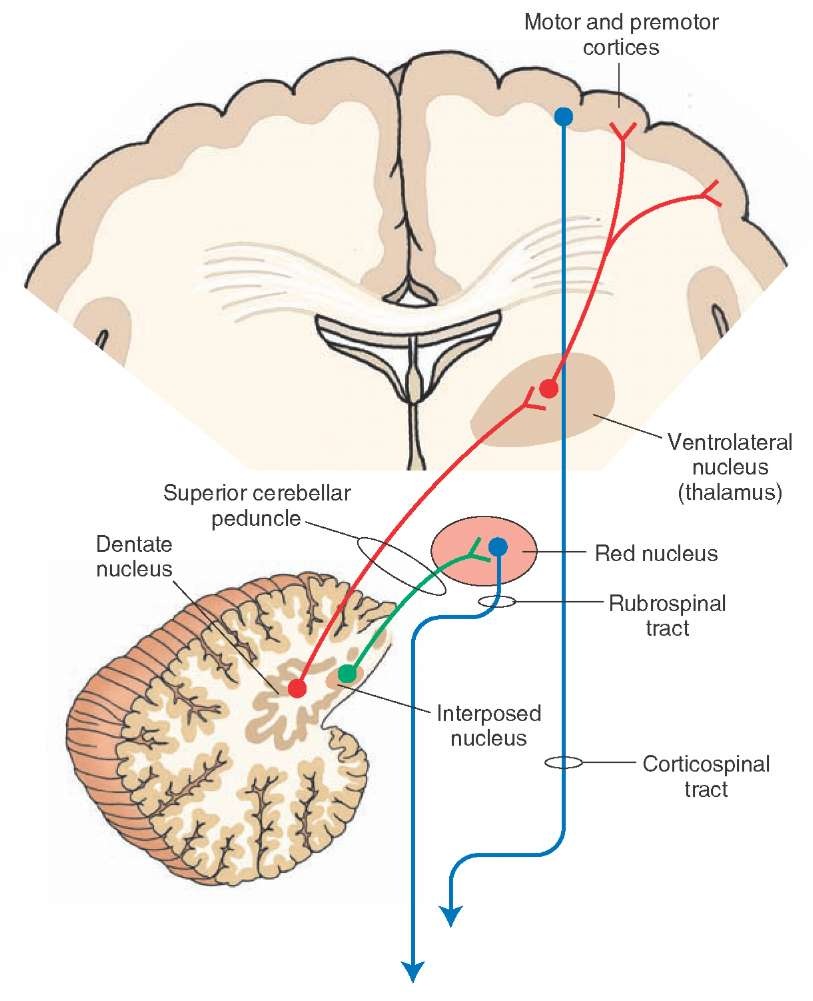"The small study below in MSers with so called cerebellar tremor may be of interest to you. The cerebellum or 'small brain' is the structure at the back of your brain that controls motor function. It is commonly affected in MS and results in uncoordinated and slow movements. When MS lesions occur in the so called outflow pathway from the cerebellum it causes a severe tremor; this type of tremor used to be called a rubral (red) tremor as it was associated with lesions in, or near, the so called rubral (red) nucleus of the midbrain. The following YouTube video is a good example of a cerebellar outflow tremor and illustrates how disabling this type of tremor can be. This type of tremor is also socially isolating; MSers with type of tremor don't like being seen in public."
"In general this tremor responds very poorly to oral medications. The study below, however, shows that physiotherapy and the use of diving, or exercise, wrist weights improves upper limb function. This is my experience as well. By using wrist weights you dampen down the amplitude of the tremor. Increasingly we are sending patients with type of tremor for functional neurosurgery; this involves making a lesion in the thalamus (thalamotomy) using stereotactic techniques (surgical or ultrasound lesion) or inserting a stimulator into the area to block the function of an area of the thalamus. A good predictor of how well someone will be able to function after surgery is to immobilise the arm by holding it tightly, essentially to eliminate the tremor, and to then assess fine alternating finger movements. If the finger movements are still coordinated and rapid then there is a good chance that the patient will have a good result from surgery. However, if the finger movements are slow, incoordinated and inaccurate then surgery won't improve function."
"The great tragedy of this type of tremor in MS, like so many other disabilities, is that it is potentially preventable with early effective treatment."
Vishnu & Rekha. EFFECTS OF WRIST WEIGHING IN REDUCING UPPER LIMB TREMORS IN PATIENTS WITH CEREBELLAR LESIONS. Int J Physiother Res 2015, Vol 3(4):1138-41.
Background: An intentional tremor is one of the most untreated symptoms in patients with cerebellar ataxia. Upper limb tremors decreases the performance of many activities of daily life Thus treatment of patients with tremor probably implies better functional ability. It is one of the major areas of concern to improve functional independence hence, this study proposed to know the effects of wrist weighing in reducing upper limb tremors in cerebellar injury patients.
Materials and Methods: A total number of 21 patients with various abnormalities of cerebellar function were selected. These patients were randomly divided into two groups. One group was treated with wrist weighing by using Velcro weight cuffs for 15 minutes along with conventional physiotherapy for 5 days a week for 2 months & the other group was treated with conventional physiotherapy for 5 days in a week for 2 months. The subjects were tested by using tremor rating scale and nine hole peg test. The values are collected before and after the treatment
Results: In the group treated with wrist weighing the improvement in the tremor rating scale is very significant (p: 0.0001) and in nine hole peg test is extremely significant (p: 0.0001). In conventional therapy group the improvement in the tremor rating scale was significant (p: 0.0051) and in nine hole peg test is very significant (p: 0.0002).
Conclusion: Incorporation of wrist weighing along with conventional therapy reduced the intensity of upper limb tremors in patients with cerebellar injuries but both the treatments are effective in improving upper limb function.

